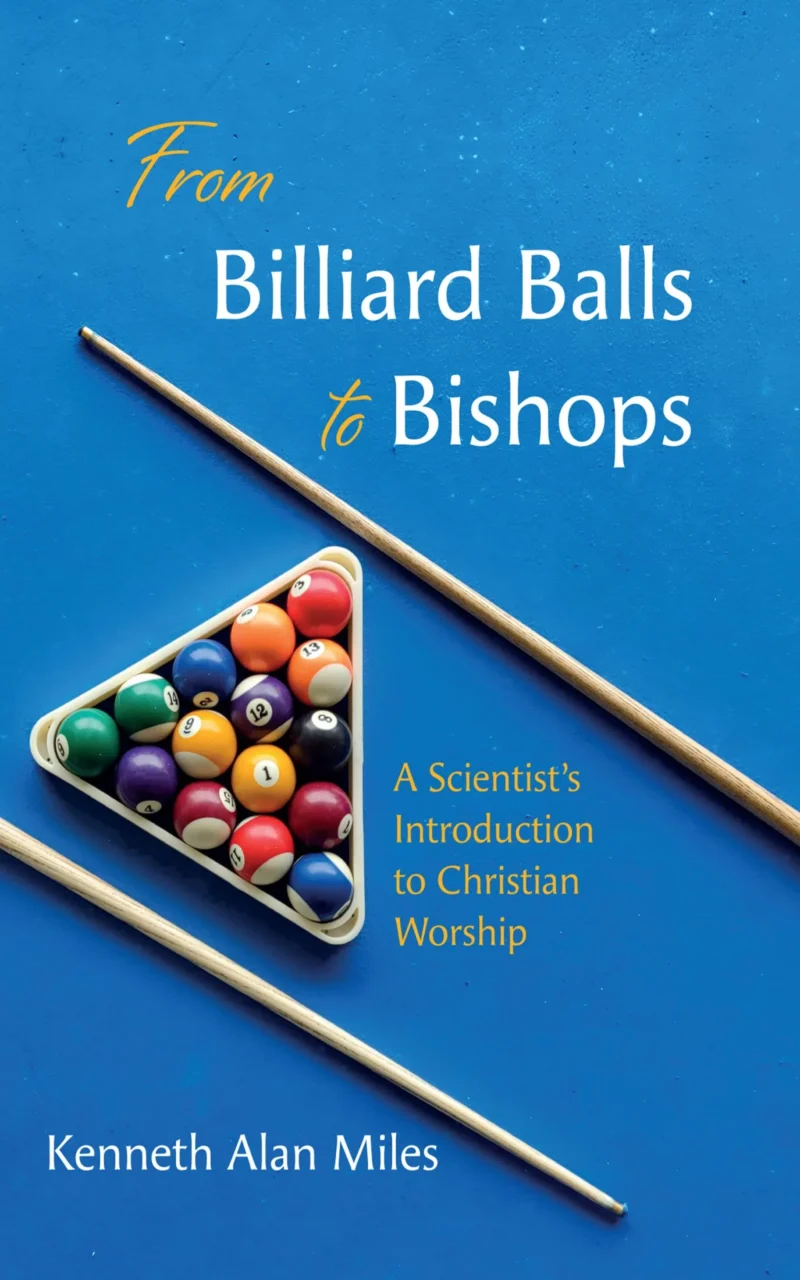Book reviewed by Charles Sherlock, May 2025
From Billiard Balls to Bishops: A Scientist’s Introduction to Christian Worship
by Kenneth Alan Miles
Eugene, OR: Resource Publications, 2023; xviii + 166 pages
ISBN 9781666759242, first edition, paperback
AUD$20
First, this is an enjoyable read. Each chapter opens with a story of someone who is ill being diagnosed using a variety of imaging techniques. The author, a specialist in radiology and nuclear medicine, clearly delights both in his work and in his Christian faith (of Roman Catholic tradition). Readers will come away with a better understanding of what medical imaging involves, and how the scientific methods used relate to diagnosis.
But don’t be put off by the title! As the Introduction states, it came from a talk to a church group and is a chapter heading: bishops are mentioned just once, and billiards not much more. The subtitle is more to the point, and is why I asked to review this book, which speaks to both scientists and liturgists.
A distinctive element is the use of the various types of imaging in diagnosis—X-rays, CT, PET, and other scans—to explore how evidence is properly gained and applied. This leads to a five-level table (p. 48) in which evidence from opinion (bottom level), experiences (levels 2–4) and experimental data (top level) are related. How reason, intuition, and uncertainty interact in evidence assessment is a highlight of the analysis, which is applied to experiences of God, especially in liturgy.
Part I unfolds this process to explore scientific method as used in medicine, opening this out to consider experiences of God. It takes a fresh and nuanced approach to apologetics, based in a Christian worldview but also supporting the reality of religion (mistaken or otherwise) generally. The final chapter in this Part, “A Case for Worship,” pulls together the sequence of evidence issues explored.
Part II builds on this approach to assess how typical elements in corporate Christian worship give evidence of, and are shaped by, God’s presence and action in nature. This is food for thought for anyone who takes part in liturgy (of whatever tradition), especially for those responsible for its construction, preparation, and leading. Place, words, posture, prayer, community, rituals, presiding, and more are assessed, along with their effect on unbelief. A brief chapter considers how these have been affected by online worship post-COVID: a typo is the telling omission of the second and third letters in “denomination”!
Issues taken up across the book include chaos theory, AI, electron behaviour, evolutionary mechanisms, DNA, and more. The importance of the “autonomic nervous system” in our bodies is seen to be of particular significance. Theological discussion is less frequent than medical and scientific matters, but is informed, classically Trinitarian, and is sensitive in debated areas (for example, speaking in tongues, healing, rituals, prayer for others).
Each chapter is beautifully organised, not least due to the tables and diagrams that illustrate the text, with helpful subheadings. A bibliography rounds out the book: the scientific material listed is extensive, but while theological works are few, the choice is wise (Karen Armstrong, Rowan Williams, N. T. Wright, C. S. Lewis), plus citations from official liturgical sources.
The final brief chapter is “Science as an Act of Worship”—amen to that! Yet only in the last sentence is “worship” considered beyond liturgy, whereas in biblical terms, “worship equals liturgy plus lifestyle.” That said, the book’s overall thesis is seen in this quotation: “The entire natural world can be seen as a complex system of interconnected components operating in the context of God” (p. 144).
I have no hesitation in commending this book. Any reader who wants to explore how evidence is gathered and assessed across the wide range of human knowing will benefit from it. Liturgists will find important clues as to how the sciences can assist Christians in understanding why and how we act in church—and in all of life.

